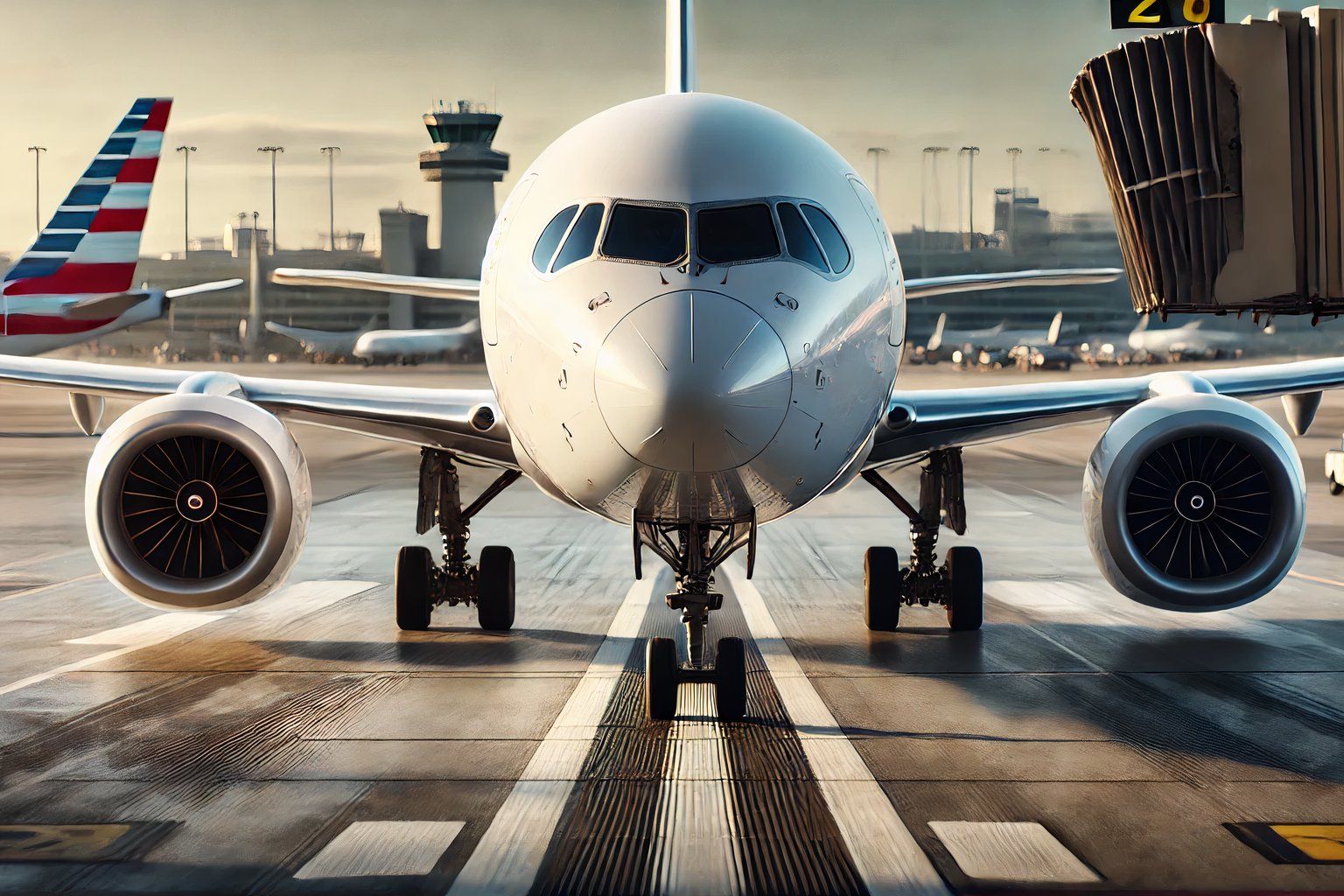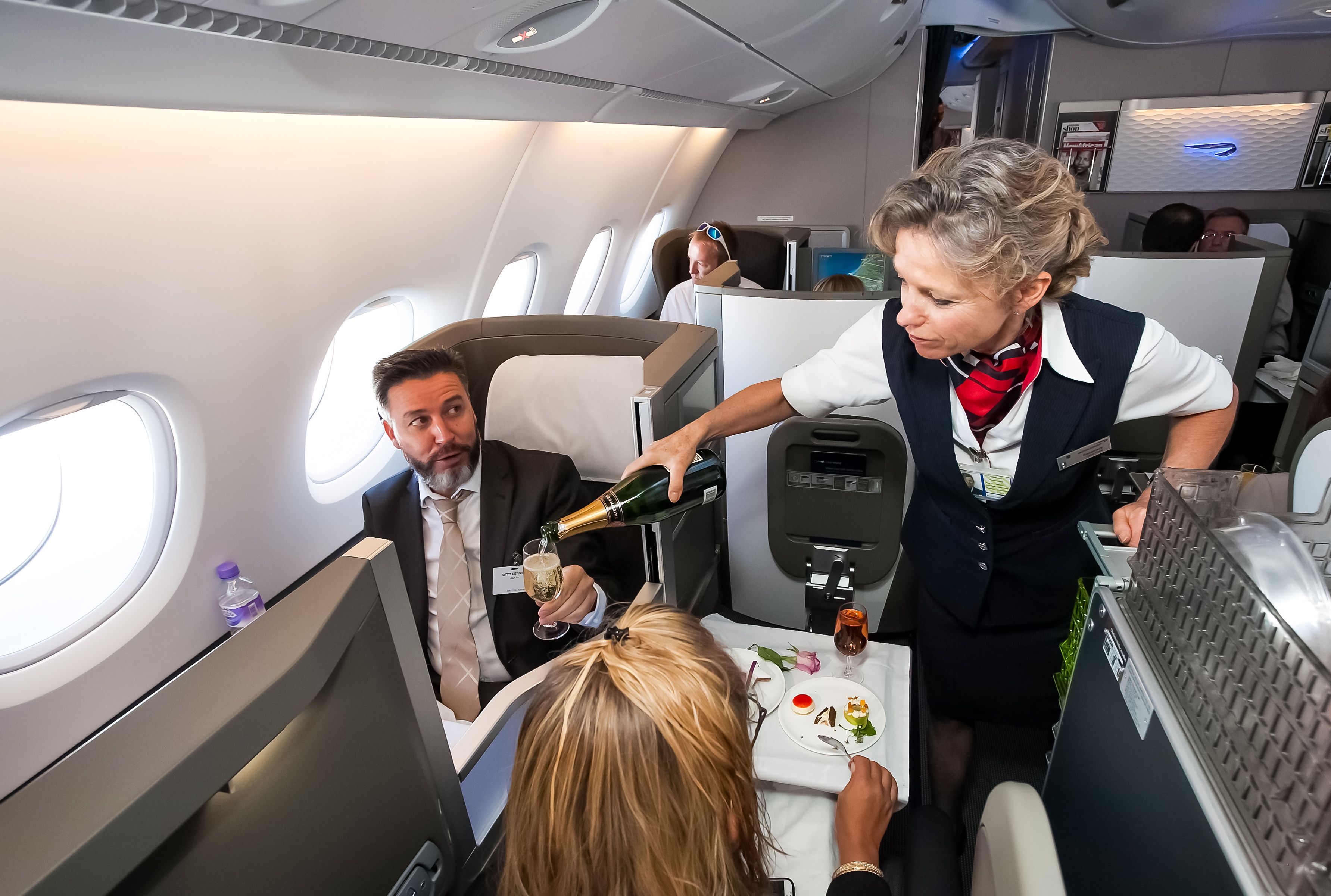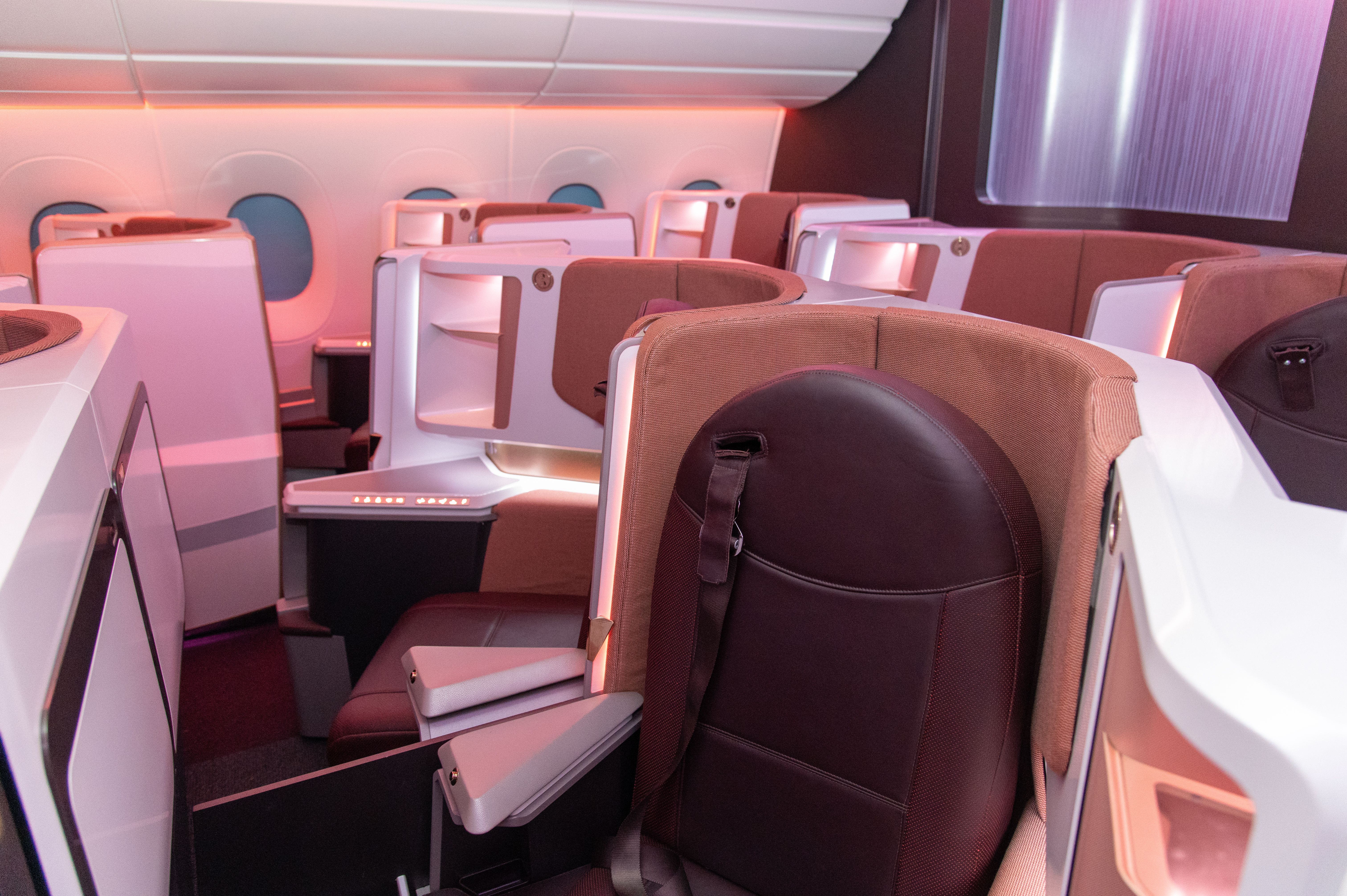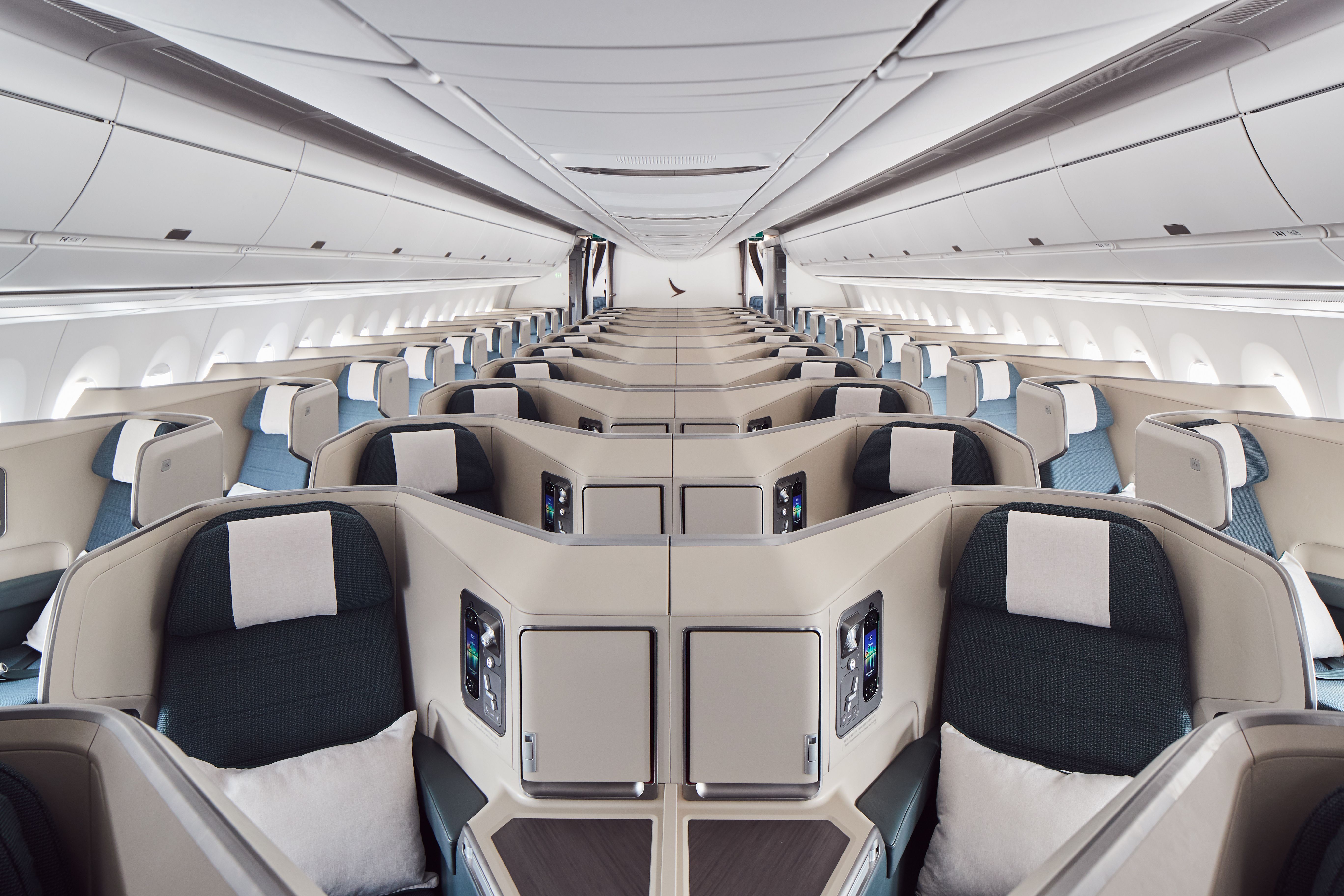Found in first and business class
cabins, herringbone or reverse herringbone seating describes how the seats are arranged. As the name would suggest, these seats are laid out in a distinctive weaved shape like a broken zigzag. The seating arrangement is called herringbone because it resembles the skeleton of a herring fish. Over the past 30 years, first and business-class seating has gone from having a wider reclining seat with extra legroom to one that becomes a lie-flat bed at the push of a button.
A change in consumer preferences has led to a change in how business-class seating is laid out
Over the past two decades, there has been no more drastic shift than the change in business-class cabins. International business class cabins, which once were home to a variety of recliners that provided only marginally more comfort than flying economy, are now filled with lie-flat seating, where each passenger has at least six feet of personal space.
Over time, airlines have attempted to configure seats in several different configurations to best serve these needs. As airlines are attempting to balance both passenger preferences and spatial optimization, it can be difficult to find the most efficient way to lay out around 30 or so seats in a typical business class cabin.
Initially, airlines experimented with laying business class seats out side-by-side, with some carriers continuing to operate this way today. By laying flat-bed seats directly next to each other, carriers could fit up to seven in a row, something that can still be noted in Emirates 777 business class today.

Problems with straight layouts and early attempts to provide direct aisle access
However, this configuration ultimately proved unpopular, as passengers did not enjoy the lack of privacy that the configuration offered. As a result, direct aisle access for all passengers soon became the standard for international long-haul business class seating.
Some airlines began to experiment with even more complex concepts, like British Airways, which introduced its famously disliked “yin-yang” seating configuration that allowed for 2-4-2 seating onboard the Airbus A380. This odd setup had some passengers facing backwards and often required them to stare at each other during takeoff and landing.
Photo: Sunshine Seeds | Shutterstock
Other airlines began to create layouts that varied by row, allowing them to have a fully flat bed that reached under the armrest of the seat in front. This created the famous SWISS “throne” seats that you can still fly today on some of their aircraft. Nonetheless, the configuration that would eventually win out would soon be introduced by a UK-based airline.
Virgin Atlantic was the first to use herringbone seating
British Airways rival Virgin Atlantic
introduced the first fully lie-flat business seats in 2000. While the ![]() British Airways
British Airways
seat became a fully horizontal bed, Virgin Atlantic’s J2000 seats were at an angle when made flat. Business class passengers preferred British Airways seats and Virgin Atlantic began to lose some passengers as a result.
In 2003, Virgin Atlantic redesigned its upper-class offering with a complete makeover that included PearsonLloyd and Softroom-designed seats in an inward-facing herringbone layout. Because of the 1-2-1 configuration, each passenger had direct aisle access. The innovative seating won numerous design awards and led to an increase in business for Virgin.
Other airlines copied Virgin Atlantic’s seats
Much to the annoyance of Virgin Atlantic, other airlines followed Virgin’s lead and introduced herringbone seats on their aircraft. Claiming that they owned a patent for the seats, Virgin Atlantic sued the manufacturer Contour Aerospace.
When the case eventually went to court, it was determined that the seats sold to other airlines had different components than the Virgin seats, so it was dismissed. While the herringbone seat has many advantages, there are notable issues.
The downside of herringbone seats are:
- They have limited storage space
- They can feel somewhat claustrophobic
- There is not much room for your feet when they are converted into a bed
- Because they are angled inwards, it is challenging to look out of the window
- When configured as a seat, there is very little privacy as they all face the aisle
Reverse herringbone seating
Similar to herringbone seating, reverse herringbone seating is nearly identical, but as the name suggests, the seats are angled towards the windows rather than the aisle. Reverse herringbone seats were developed by multinational design company JPA Design, a transportation interiors and seats specialist.
Photo: Cathay Pacific
The first airline to use reverse herringbone seats was defunct carrier US Airways when, in December 2009, it fitted them to its business class aboard the airline’s Airbus A330-200 twin-engine widebody aircraft. Today, reverse herringbone seating is the business seating of choice for most airlines and is increasingly being adopted as airlines retire some of their older seats.
The advantages of reverse herringbone seats:
- Just like regular herringbone seats, each offers direct access to the aisle.
- Because the seats are angled towards the window and not the aisle, they offer far more privacy when used as a seat.
- Reverse herringbone seats come with a console table that is large enough to accommodate a laptop computer easily.
- You can easily see out of the aircraft’s windows.
The disadvantages of reverse herringbone seats:
- When they are configured as a bed, your head is next to the aisle.
- Like regular herringbone seats, they can feel somewhat claustrophobic.
- Reverse herringbone seats in the middle are not positioned next to each other and, therefore, are not the most ideal if you travel as a couple or family.
So what’s the bottom line here?
At the end of the day, herringbone seating was an ingenious industry innovation that allows carriers to best optimize the space within their cabins. Passengers demanded direct aisle access from carriers and the herringbone configuration was determined to be the most efficient from a spatial perspective.
Herringbone seating initially demonstrated the concept’s viability, being successful for the first time in Virgin Atlantic cabins. With superior privacy, better views, and direct aisle access, it is unsurprising that airlines eventually moved towards the reverse herringbone design, adopting it long-term.





